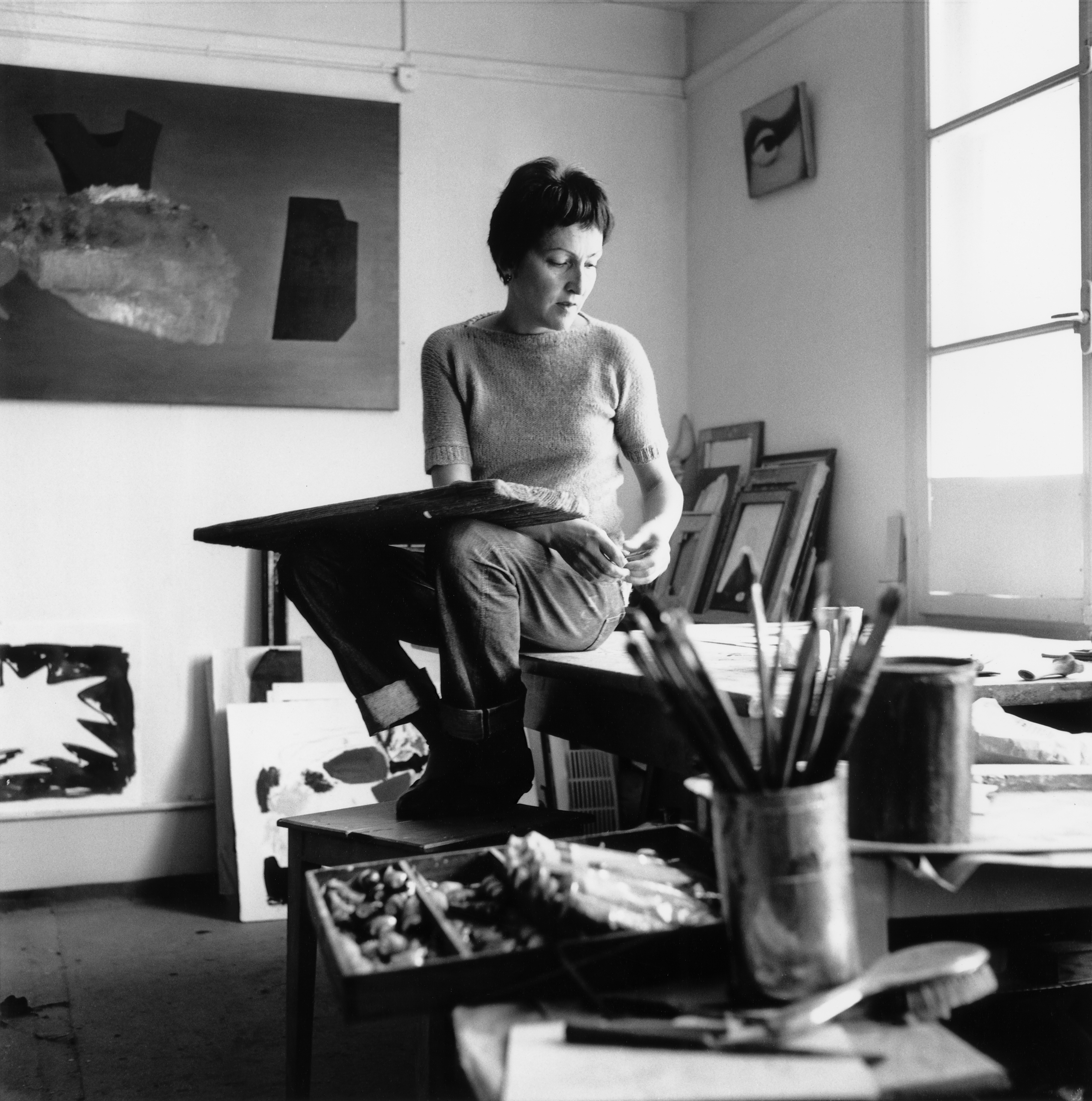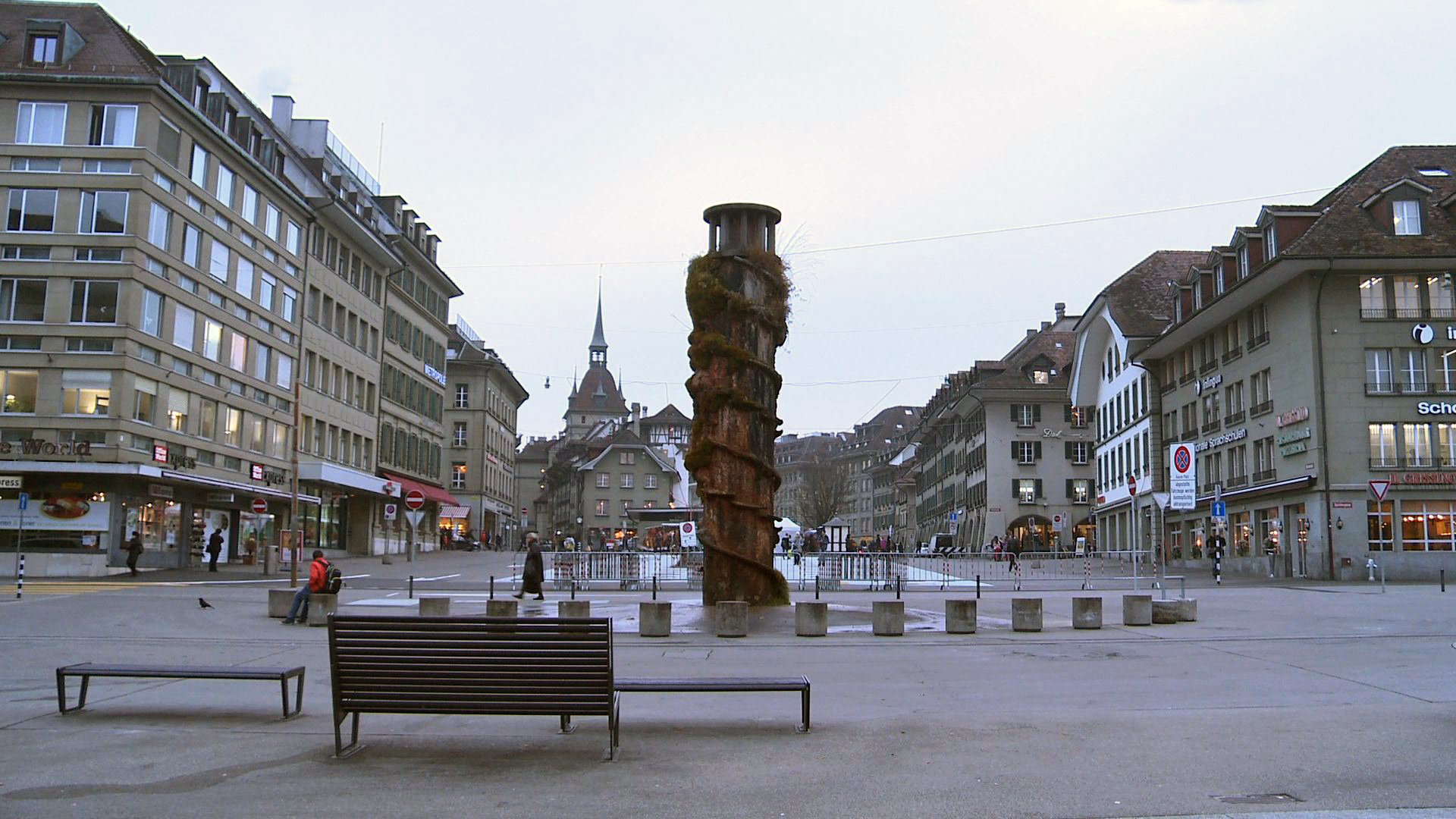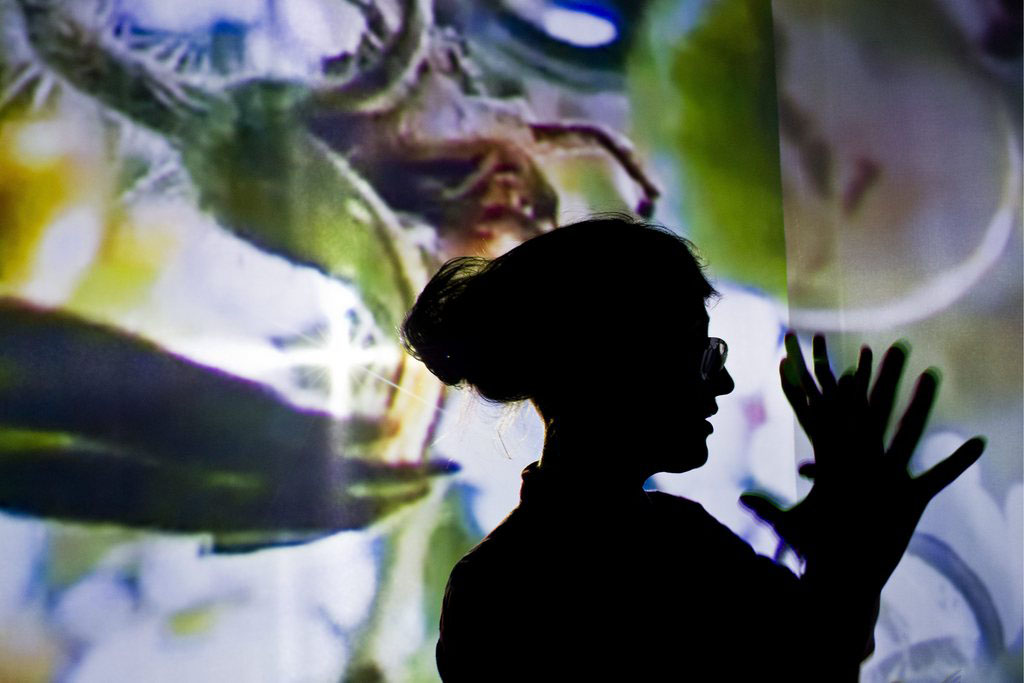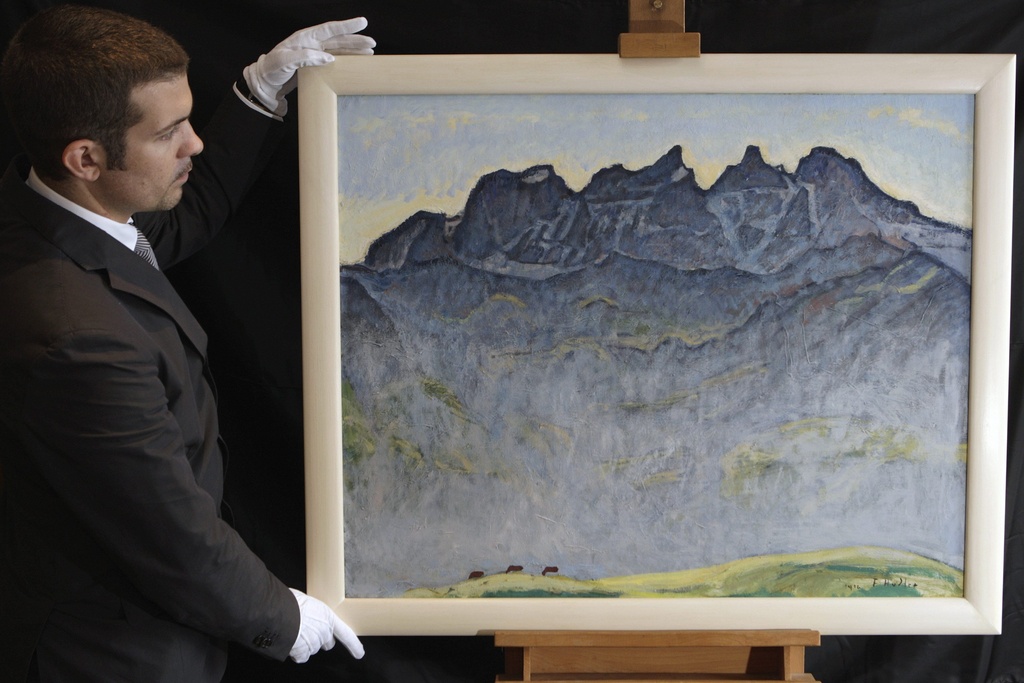Celebrating Switzerland’s most famous surrealist

A century after her birth, the legacy of Swiss artist Meret Oppenheim is being marked by major shows in Bern, Berlin and Vienna that reveal her ongoing influence, including in contemporary art.
Oppenheim is best known for “Breakfast in fur”, the teacup covered in gazelle fur that she created in 1936 when she was only 23. Overnight it became the icon of surrealism, but the resulting fame almost destroyed the young rebellious artist.
Oppenheim retreated back to Switzerland where she spent the rest of her life working outside all stylistic conventions and refusing all labels. Although she passed away in 1985, she is still considered a trailblazer of the avant-garde.
To do justice to Oppenheim’s multifaceted oeuvre – which includes paintings, sculptures, costumes, design and poetry – events are taking place at the Kunstmuseum in Bern until February and at the Bank Austria Kunstforum Vienna and Martin-Gropius-Bau in Berlin until the end of 2013.
Following on from the Kunstmuseum Bern’s 2006 retrospective, curator Kathleen Bühler decided to show how contemporary Oppenheim’s art and ideas have remained in an exhibition entitled “Meret’s Sparks”.
She invited five young artists based in Switzerland to display their own “surrealism” alongside a selection of 50 pieces by Oppenheim. The artists were selected not because of any visual similarities in their work, but because they shared Oppenheim’s “funny, erotic, anachronistic universes”.
“Like Meret, they invite you to forget your own way of thinking and let your mind wander,” Bühler told swissinfo.ch.
The result is as unsettling as Oppenheim’s work, but as playful and intriguing as well. Although all five artists work in distinctive styles, bordering on the bizarre, they conjure her spirit so powerfully that she appears to be peering approvingly over their shoulders.

More
A bridge between nature and the city
Meret’s eroticisms
One of the participating artists, Francisco Sierra, revealed that he did not know Oppenheim’s work that well when he was approached by the Kunstmuseum Bern.
But the more he learned, the more he became aware of her invisible influence: “I was astonished to discover how close we are.” Both artists were self-taught.
They even share a peculiar sense of humour that allows them to illustrate genitalia without being lewd. Oppenheim did not shy away from nudity and allowed her lithe and androgynous silhouette to be photographed naked by Man Ray in 1933, a series evocatively titled Erotique voile (Veiled Erotic).
A strong-willed young woman who managed to break away from the oppressive influence of the aging surrealists when she was still only 26, including from Max Ernst with whom she had an affair, Oppenheim has been branded a feminist, another label she abhorred. She just wanted to be free, but her freedom came at a price because she ceased to be an artist for several years when she returned to Switzerland.
“Meret did not subscribe to the prevailing currents and remained true to herself,” said Sierra, who also shares her disdain for conformism.
In the Bern exhibition, he expresses his connivance with Oppenheim with a suspended fur-covered bracelet the size of a dining room table. “We both like taking people on journeys,” he beamed mischievously.
“Meret’s Sparks – Surrealisms in Contemporary Swiss Art” is on at the Kunstmuseum Bern until February 10, 2013 with the participation of Maya Bringolf, Vidya Gastaldon, Tatjana Gerhard, Elisabeth Llach and Francisco Sierra. The five contemporary artists were invited to Oppenheim’s summer home in the Ticino, where her niece, Lisa Wenger, continues to preserve and uphold the memory of her aunt.
Publication of an exhibition catalogue with numerous texts, including by Swiss art celebrity, Thomas Hirschhorn, who explains: “Why I love Meret”.
The Meret Oppenheim exhibition at the Bank Austria Kunstforum, Vienna runs from March to July 2013 and at Martin-Gropius-Bau, Berlin from August to December 2013. It looks at nine Oppenheim themes, including the search for identity, dream scenes and myths, understanding of nature, masks and metamorphoses, eroticism and female fetishism, image-text-relations. Publication of a comprehensive monograph with an index of works, unpublished text fragments, voices of colleagues and friends and key themes.
Meret the outsider
Oppenheim’s unbridled creativity only reappeared in 1954 after she rented a studio in Bern. While working as an art restorer the preceding years, she had acquired the skills that would allow her to explore different themes in a variety of materials.
Her uncensored inventiveness is what Elisabeth Llach, another of the artists participating in the Bern show, finds so attractive. Llach did not want to work with Oppenheim’s paintings, which she finds oppressive. On the other hand, she discovered that her objects worked well with her own world of “excess and hysteria, of decadence and beauty”.
The extravagant voluptuousness of Llach’s females comes in stark contrast to Oppenheim’s mysterious sobriety, but the juxtaposition works well.
Asked whether she considered herself to be a surrealist, Llach answered that surrealism was a movement conscribed in time between the two world wars. But that perhaps what she shared with the other four artists in Bern, and with Oppenheim, was a resistance to formalism and decorative art. “We are all outsiders,” she reflected.
Meret’s timeless influence
Unlike the exhibition in Bern, the one that will open in Vienna in March and travel to Berlin in August will be a major retrospective of Oppenheim, the first museum exhibition of the German-born artist in either city.
“It is long overdue,” curator Heike Eipeldauer told swissinfo.ch. She sees the centenary as an ideal occasion for making Oppenheim’s work accessible both to a broad-based public and to international specialists.
Given the diversity of her oeuvre, Eipeldauer has decided on a thematic approach sourced in the myths and dreams that guided Oppenheim. “Besides, a linear development was not part of her thinking,” she said to explain the non-chronological presentation.
Oppenheim’s work is not extensive, Eipeldauer pointed out, but there is always something new to discover. “You can’t come to a point where you have decoded it all.”
The Swiss artist continues to fascinate, Eipeldauer suggested, because she distrusted presumed truths, practised a transdisciplinary approach in a large variety of subjects and materials, but most of all, she held “an unparalleled belief in freedom as a form of existence”.
Billed for the shows as one of the most significant and idiosyncratic artists of the 20th century, Oppenheim’s enduring credo was: “Freedom isn’t given, it has to be taken.”
1913 Born October 6 in Berlin.
1914 Family moves to Switzerland when father is conscripted in WWI.
1932 Moves to Paris to become a painter. Becomes involved with the surrealists.
1936 Makes “Breakfast in fur” following an encounter with Picasso and erstwhile mistress Dora Maar where they decide that anything can be made in fur.
1938 Studies to become an art restorer.
1939 Moves to Basel. Political situation deprives her family of an income.
1945-49 Meets and marries Wolfgang Laroche. Moves to Bern.
1954 Finds her creative drive again.
1967 First major retrospective at Moderna Museet in Stockholm.
1982 Berlin City Grand Art Prize and participation in Documenta 7 Kassel.
1983 Inauguration of controversial fountain in Bern.
1985 Dies of a heart attack.
“The work of Meret Oppenheim occupies a place of its own in the history of modern painting. Regardless of what she had in common with particular representatives or even particular strands of that history, her only loyalty was to her own freedom.” Kathleen Bühler, 2012
“The breakthrough that art can generate happens when something new, a new form, a new concept is created. It’s only and always about this breakthrough, and Meret Oppenheim achieved it with all of her works.” Thomas Hirschhorn, 2012

In compliance with the JTI standards
More: SWI swissinfo.ch certified by the Journalism Trust Initiative


You can find an overview of ongoing debates with our journalists here. Please join us!
If you want to start a conversation about a topic raised in this article or want to report factual errors, email us at english@swissinfo.ch.